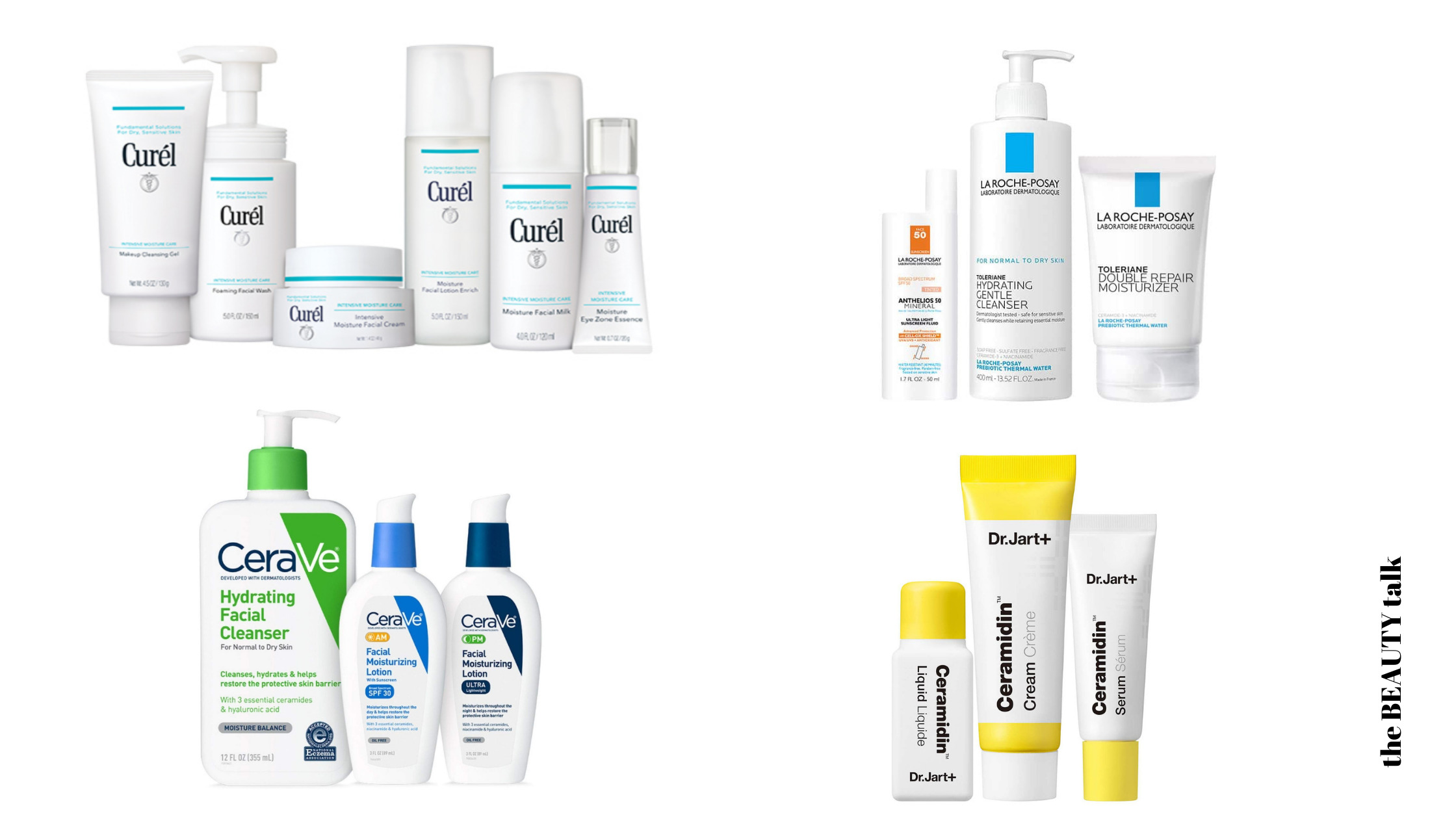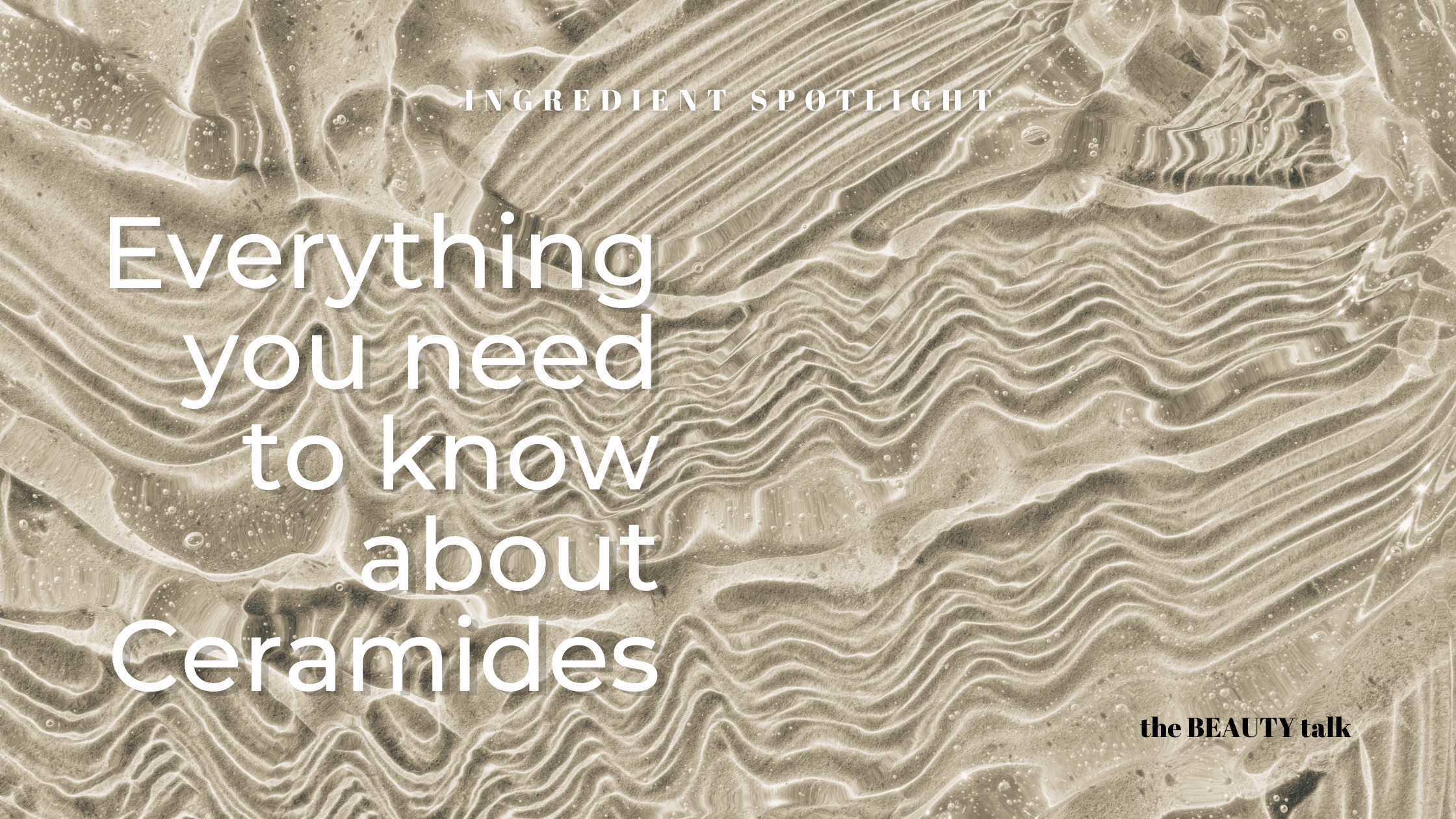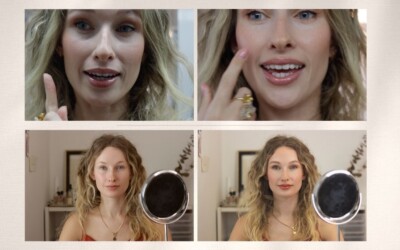Here to arm you with overall knowledge on this fantastic skin-identical ingredient, but in case you don’t keep reading (please do), all you need to know is ceramides = barrier protection and hydration.
FAST FACTS – CERAMIDES
TYPE OF INGREDIENT: Moisturizer, Lipid Fat
MAIN BENEFITS: Builds up the skin barrier helping to retain moisture
WHO SHOULD USE IT: Everyone can; it’s a skin-identical ingredient
HOW OFTEN CAN YOU USE IT: every day, twice a day
WORKS WELL WITH: They play well with anything, particularly other categories of lipids like cholesterol and fatty acids.
So What are ceramides?
Well, they are fats (lipid fats); we have them naturally in the top layers of our skin, hence why they are fantastic for barrier protection; more on that later! Almost all ceramides in skin care are synthetic or derived from plant extracts like wheat germ oil, rice, sweet potatoes or yeast.
How do ceramides work in the skin?
Visualise ceramides as the glue to your skin cells, holding everything in place. Without this ‘glue’ your skin cells won’t be able to do their primal function of protecting us from outside aggressors. With a better barrier, your skin will hold onto water better and its significantly improves dehydrated skin.
Who should use ceramides?
Everyone, with age and sun damage, these helpful ceramides, are depleted, weakening the skin’s barrier. Particularly if you’ve overdone it with exfoliation or actives and notice your skin’s barrier isn’t happy, focus on some of the calming product ranges recommended below. You can’t overdo ceramides. They are often in products you may already use or in very gently formulated products.
What areas of improvement can you notice from using ceramides?
Softness and hydration will be a big one. Remember, they are the glue to the skin cells, so ceramides will help smooth rough, dry skin, calm your redness and irritation. Importantly for people with dehydrated skin, which is a skin condition where the barrier can’t retain water, ceramides help this problem.
Other skin barrier conditions like atopic dermatitis will also be improved with a strengthened barrier and the anti-inflammatory properties of using ceramide products.
Finding ceramides on the ingredient label:
In most cases, it’s probably mentioned on the front of the packaging or in the description. Most brands will want to highlight this ingredient.
It could be the word Ceramides followed by one of the following 1, 2, 3, 6 II, EOS, EOP, NG, NP, NS, and AP.
You might also see some these chemical names:
- N-stearoyl sphinganine
- N-stearoyl phytosphingosine
- α-hydroxy-N-stearoylphytosphingosine
- Caproyl sphingosine
- Cetyl-PG Hydroxyethyl Palmitamide
- Hexadecanamide

Great product ranges with ceramides:
Curel A long-standing ceramide based brand from Japan, I have a full review on the products here!
Cerave Another brand that’s not new but over the last few years has found new fame and for good reason, loaded with ceramides and gentle for all skin types.
LRP French skincare staple with many products, including ceramides.
Dr Jart+ is from Korea and have a range called Ceramidin primarily focusing on ceramides.
As always, say hi on Instagram or join the Facebook group!







